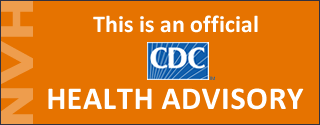Issuance of Guidance on Management of Asymptomatic Patients Who Received Epidural or Paraspinal Injections with Contaminated Steroid Products
Distributed via the CDC Health Alert Network
October 23, 2012, 22:00 ET (10:00 PM ET)
CDCHAN-00330-2012-10-23-UPD-N
As part of its ongoing investigation of the multistate outbreak of fungal infections, the Centers for Disease Control and Prevention (CDC) continues to assess and revise interim guidance to clinicians involved in the management of patients who received injections with contaminated steroid products distributed by the New England Compounding Center (NECC).1 Since early in the outbreak, CDC has recommended against antifungal prophylactic or presumptive treatment of exposed asymptomatic patients in the absence of diagnostic testing with results indicating meningitis. This recommendation remains unchanged.
Nevertheless, CDC recognizes the need to assist clinicians in managing asymptomatic patients who received epidural or paraspinal injections with contaminated steroid products.1 CDC is releasing updated interim guidance to clinicians based on new data that has become available during this investigation.
CDC analysis suggests that the period of greatest risk for development of fungal meningitis among patients who received epidural or paraspinal injections with contaminated products1 is during the first 6 weeks (42 days) after injection; therefore, additional monitoring of these patients should be considered. Accordingly, CDC provides guidance for asymptomatic patients who received epidural or paraspinal injections with contaminated steroid product1 within the last 6 weeks (42 days), and those who received such products longer than 6 weeks (42 days) ago. For specific details about the updated guidance, see Guidance on Management of Asymptomatic Patients Who Received Epidural or Paraspinal Injections with Contaminated Steroid Products.
As stated above, CDC does not recommend initiation of antifungal treatment in the absence of diagnostic test results indicating fungal meningitis in exposed patients who are asymptomatic. Currently available data do not suggest an added benefit to this approach in comparison to the strategies outlined in the updated guidance, and patients may experience serious adverse drug events associated with treatment.
The guidance and estimates are based on data currently available to CDC. Additional data that are gathered from existing and newly reported cases of infection, when combined with previous data, may alter the guidance and estimates. Clinicians and others with patients under their care who use the guidance and estimates should check CDC’s website for the most up-to-date information, since it is subject to change periodically.
For the most recent information about this and other clinical guidance as well as case definitions being used in the current investigation, visit CDC’s Clinician Guidance web page.
1. NECC lots of methylprednisolone acetate (PF) 80mg/ml:
- Methylprednisolone Acetate (PF) 80 mg/ml Injection, Lot #05212012@68, BUD 11/17/2012
- Methylprednisolone Acetate (PF) 80 mg/ml Injection, Lot #06292012@26, BUD 12/26/2012
- Methylprednisolone Acetate (PF) 80 mg/ml Injection, Lot #08102012@51, BUD 2/6/2013
The Centers for Disease Control and Prevention (CDC) protects people’s health and safety by preventing and controlling diseases and injuries; enhances health decisions by providing credible information on critical health issues; and promotes healthy living through strong partnerships with local, national and international organizations.
Department of Health and Human Services
HAN Message Types
- Health Alert: Conveys the highest level of importance about a public health incident.
- Health Advisory: Provides important information about a public health incident.
- Health Update: Provides updated information about a public health incident.
###
This message was distributed to state and local health officers, state and local epidemiologists, state and local laboratory directors, public information officers, HAN coordinators, and clinician organizations.
###

